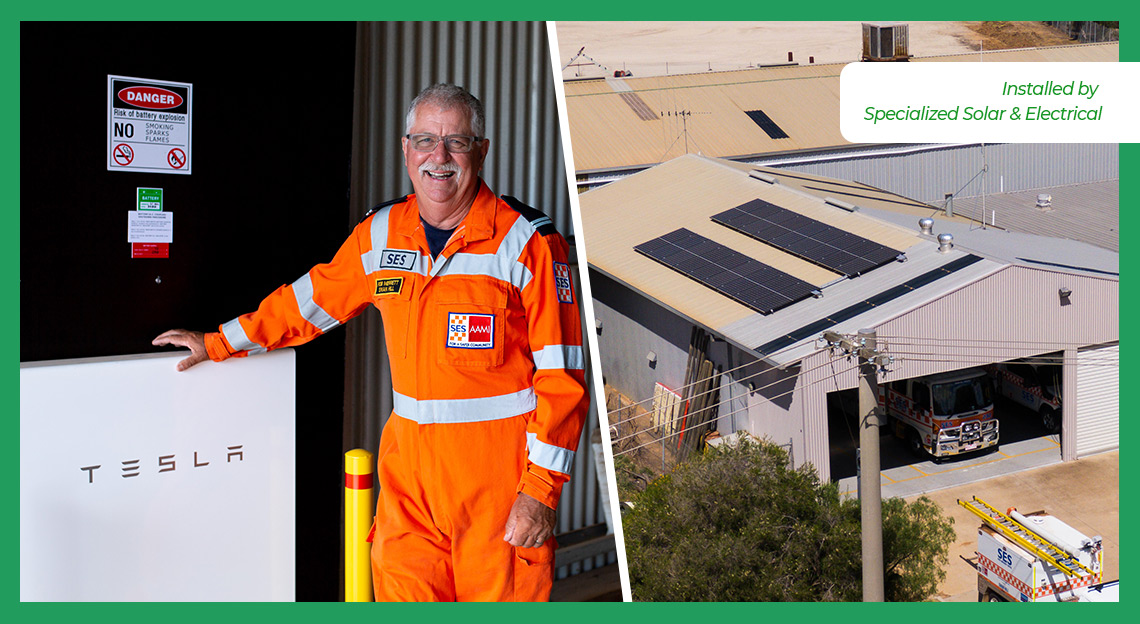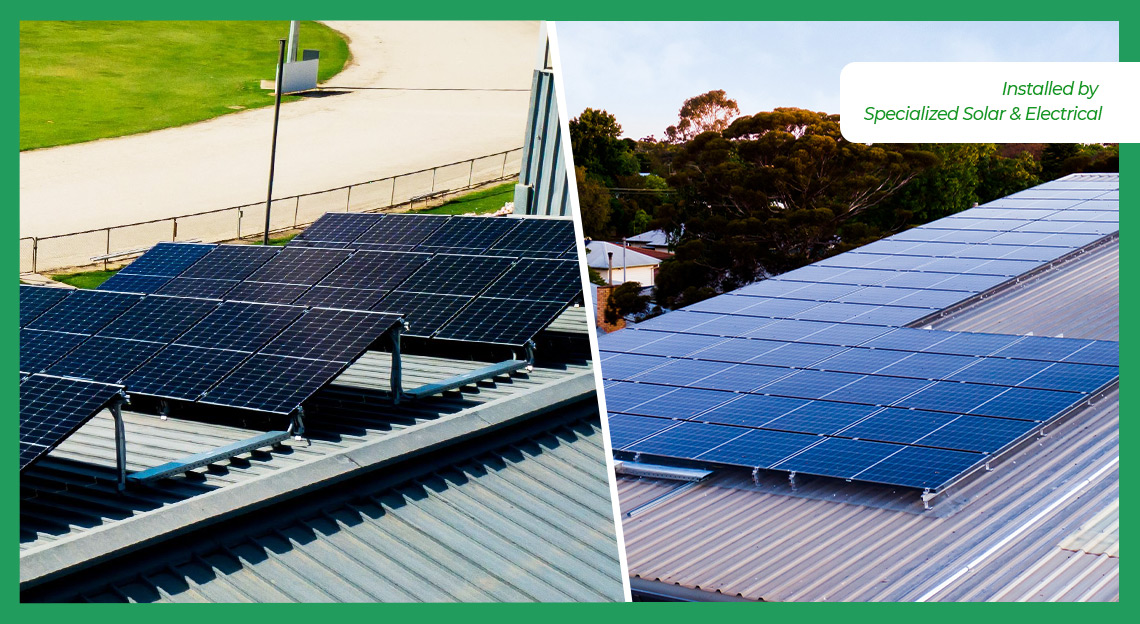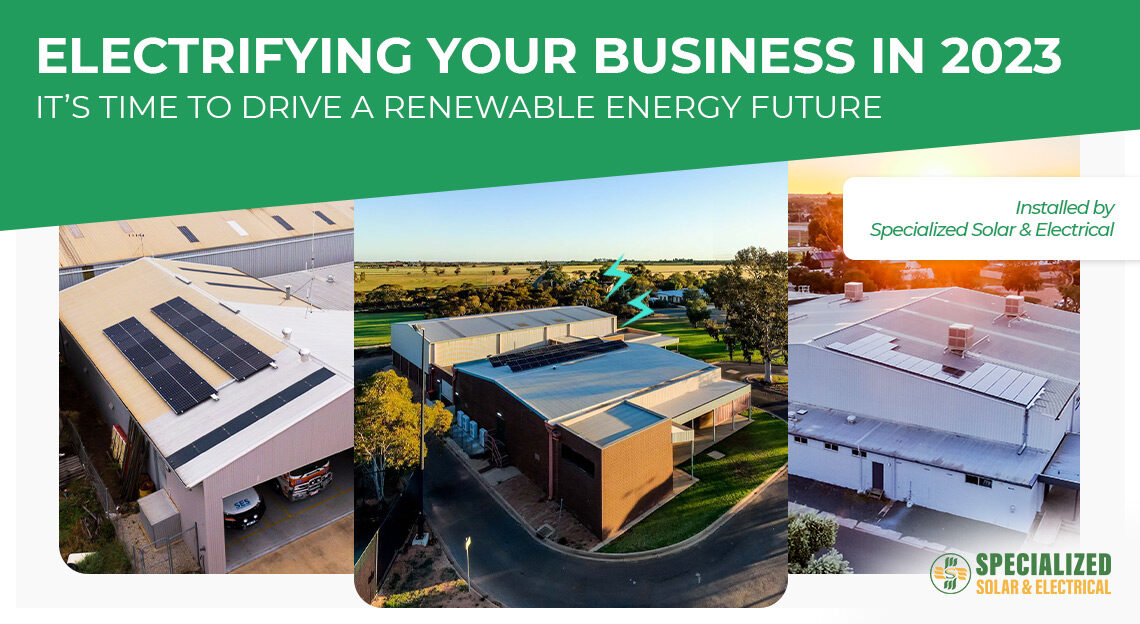Electrifying everything in your business has the potential to transform your operations, improve your bottom line, enhance your environmental credentials, and improve employee and client satisfaction. Because gas and fuel prices are skyrocketing, forward-thinking Australian businesses are moving fast to fully electrify their operations, powering them with solar.

Competitive advantage
No matter whether you own or lease your premises, solar-powered electrification provides massive business benefits and cost reductions. Electrification is both a defensive and an aggressive business strategy. It’s defensive because solar-powered electrification insulates your business from energy price volatility. And it’s aggressive because it provides competitive advantage through cost savings from energy automation and efficiency gains.
Grants and rebates
Because federal and state governments are fully behind electrification, there are rebates, financial incentives and grants available to help businesses fast-track their transition to all-electric powered by renewables. Talk to us to find out what grants your business may be eligible for.
10 steps to electrification
Here the 10 steps any business – no matter what size – can take to get on board to full electrification.
1. Install solar
Most businesses can save thousands of dollars a year on electricity with a commercial solar system. If your business operates from premises between 9 and 5pm at least five days a week, a commercial solar system should pay for itself within three to five years. Most 9-5 businesses self-consume around 80 per cent of the solar electricity that’s generated. The more you electrify your business, the higher the solar self-consumption ratio resulting in an even better return.
2. Install comprehensive solar monitoring
With a commercial solar system providing the building block for full electrification of your business, the next step is to install comprehensive solar monitoring. Most solar systems only include solar generation monitoring which shows kilowatt hours of electricity produced. Whilst this is useful, it is even more important is understand how that solar electricity is being used – with the goal of getting as close as possible to 100% solar self-consumption. That’s why it’s essential to ensure your commercial solar system includes comprehensive solar generation and consumption monitoring.
Pro-tip: Install a screen displaying data from the solar monitoring system in a well-trafficked location on your premises to raise awareness of energy usage amongst employees and customers – and promote the fact your organisation is pro-solar! Post it on your website and socials.

3. Electrify heating and cooling
Heating and cooling can account for 50 to 70 per cent of energy costs for many businesses. Inefficient electric heating is hugely costly, and gas is fast becoming prohibitively expensive. The cheapest and greenest way to heat and cool your premises is with reverse-cycle air conditioning according to Sustainability Victoria. This could be as simple as a few split systems through to fully ducted reverse-cycle heating and cooling. Reverse-cycle air conditioners are around 3-4 times more efficient than gas and conventional electric alternatives due to the use of highly efficient heat pump technology.
4. Electric heat pump hot water system
Another energy guzzler in many businesses is water heating. Getting off gas, or upgrading from resistive electric hot water systems, can save big money. An electric heat pump hot water system is around 4x cheaper to run than old electric hot water systems, and around half the price of gas hot water. And because they use ambient heat, they’re classed as a renewable energy system and qualify for generous government rebates.
5. Electrify the vehicle fleet
Electric vehicle (EV) adoption in Australia is increasing rapidly due to the expansion of fast-charging networks, the planned removal of Fringe Benefits (FBT) from eligible electric vehicles and scrapping of the current 5 per cent import tariff, with the bill currently before Parliament.
For any business with a mobile workforce, now is a great time to start looking at electrifying the vehicle fleet. There are a number of important considerations including assessing the anticipated daily mileage and checking that the energy capacity of your premises is sufficient to power the required charging infrastructure. If you’re starting down this path, get in touch for a comprehensive assessment of your electrical infrastructure and any upgrade requirements to prepare for your new EV fleet.
6. Install EV charging
Providing EV charging from your premises can improve staff morale and retention, encourage customers to visit and stay longer, and provide an additional revenue stream. Staff will appreciate the ability to power-up when they’re at work either for free or at a reduced rate. EV charging provides an added incentive for customers to spend time at your premises – and even a reason to visit in the first place! And if you’re interested in new revenue streams, EV charging can provide that as well.
Smart EV charging solutions like Wallbox provide complete power management, load balancing (so your power supply will always be optimised and never trip), security with swipe (RFID) card control to access the EV charging station – as well as integrated payment. Plus, Wallbox EV chargers can be programmed to run 100 per cent on your solar electricity or a combination of solar and grid electricity.
7. Consider battery storage
Most businesses use power 24/7, even if just to keep essential systems like security cameras, IT equipment and fridges running. Depending on your evening/ night-time power usage, installing battery storage could save your business money and provide a secure form of backup in case of power outages.
Solar-plus-battery storage can provide a combined payback of around five years, and this will only improve as energy prices rise. Factor in the additional savings from 100% power outage protection – e.g., no loss of refrigerated products/ supplies, no employee or machinery downtime – and you can see why batteries can be an excellent investment.
8. Trade energy
With battery storage comes the ability to trade energy directly on electricity wholesale market and get the same high rates as electricity retailers. That’s thanks to new innovative Aussie electricity retailer and energy tech company, Amber Electric. Amber don’t take any cut on the electricity you buy or sell, instead charging a monthly subscription. You do however have to switch from your current electricity retailer to join Amber so check your current electricity contract for any lock-in clause.
9. Centralised energy management
The beauty about full electrification is that it enables centralised, smart control of your business’s energy. With everything electrified, you can invest in a building management system that provides automated control of energy efficiency and occupant comfort from a single digital interface.
And if this all sounds too “big-business”: for you, there are lower cost solutions for smartening up your energy management, starting from smart plugs costing around $20 that tell you exactly how much electricity each appliance is using.
10. Review and improve
Because energy tech is improving all the time, you’ll want to keep abreast of developments that improve the efficiency and cost savings in your business. Whilst this can be handled internally, you may want to outsource an annual review to energy experts like us, who understand the tech, the solar and the electrical aspects of running businesses in a wide variety of sectors.
Get in touch
If you’re interested in protecting your bottom line from escalating energy costs in 2023, get in touch. We have a team of business solar and electrical experts who can advise you on the best path to full electrification for your business, provide the solutions, and help you identify grants and rebates specific to your business and industry sector.












